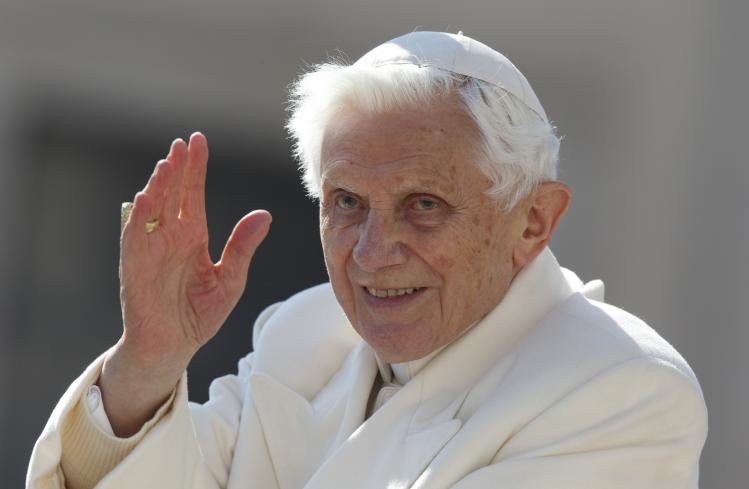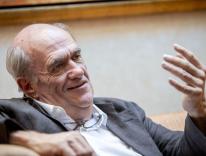
This article was originally published in Commonweal on November 15, 1985.
WHEN NORMAL CHANNELS of communication and control fail, try the mass media. This is the strategy Cardinal Ratzinger has followed in this book-length interview (which he has reviewed and approved). It is hard to think of any other explanation for why the head of the Congregation for the Doctrine of the Faith, successor to Grand Inquisitors, second only to the pope, has unburdened himself at great and uninhibited length to a popular journalist.
This explanation fits with what the cardinal says regarding the institutional weakness of his position. He notes, for example, that when he was Archbishop of Munich he presided over a large and well-financed ecclesiastical bureaucracy, while his present staff is small, over-worked, and underpaid (the same, by the way, holds for the Curia as a whole). More generally, Rome has lost the support it may once have had from non-ecclesiastical establishments. Even within the church, the press and the academy are arrayed against it. They are swayed, Ratzinger believes, by the culturally decisive class in Western countries: the affluent, educated, liberal bourgeoisie (which an American, following Daniel Bell, might call the “new class”).
The cardinal regards this class as the producer, product, and victim of the present late stage of free-market capitalism (unlike American neo-conservatives, his anti-Marxism does not lead him to be pro-capitalist). Western societies have lapsed into a hedonistic consumerism, destructive of both nature and tradition, ending in aimlessness. Many try to compensate for the vacuum of meaning in their lives by psychological therapies, Eastern spiritualities, and fashionable neo-Marxisms. Catholic “progressives” (Ratzinger dislikes the term) accommodate to these developments in an effort to make the faith attractive and relevant, but in the process betray both Christianity and humanity. Morality is relativized, the clergy and religious are in disarray, questionable forms of feminism flourish, the authority of Scripture and doctrine erodes, and the very christological foundations of the faith are undermined by revisionist interpretations. So pervasive is the malady that traditionalist reactions such as that of Archbishop Lefebvre are understandable. They are in their way as bad at the primary disease, but in present circumstances less dangerous.
Ratzinger’s analysis of liberation theologies is representative of his wider critique. Contrary to the self-image they try to project, they do not grow out of grass-roots struggles against oppression, but are culturally-imperialistic European and North American exports promoted in the third world by Westernized intellectuals. The fight of these intellectuals against sinful social structures may at times be personally costly for them, but it also brings far more press coverage (and, if successful, far more power) than does the lonely battle against sin in the heart. (It is on the doctrine of sin that Ratzinger would like to work if he had a chance to return to scholarship.)
Needless to say, those whom the cardinal regards as authentically devout among ordinary believers resist the self-appointed prophets. They suspect that neo-Marxism even in Christian guise will in the long run do no better in providing food, freedom, and justice than do the older varieties of Communism. What they chiefly want from the church, in any case, is not bread for the body (which, to be sure, Ratzinger is careful to insist is important), but the same, eternal, life-giving meat and drink which it has always offered. This is true of the common people everywhere, whether they be the non-intellectuals of the first world, the politically oppressed of the second, or the poverty-stricken (as well as intellectually and politically deprived) of the third. It is on behalf of these, the poor and lowly, that Ratzinger sees himself battling against the powers that be. Yet so strong are these powers, so effectively have they immobilized even bishops, that he (like John Paul II himself, though in a different way) has adopted the populist tactic of mobilizing mass opinion in support of Rome against what he regards as an elite opposition.
As befits a populist tract, Ratzinger’s remedy in this book is uncomplicated: adhere to Vatican II in what an American might call a strict-constructionist way. Both traditionalist rejections of the council and progressivist attempts to go beyond it by “following its spirit” must be opposed. No changes are allowable except those explicitly authorized by the council and by its authentic interpreter, the Holy See. It is almost as if Ratzinger had reverted to a Denzinger mentality. The content of the church’s teaching has expanded (Ratzinger does genuinely approve of Vatican II and thinks the church would be even worse off without it), and the style of exercising authority is different, but the hermeneutics of doctrine remain much the same. Ratzinger says, however, that he has not changed. He claims to be no different now than when he was numbered among the progressives in the sixties and was (until 1973) an active member of the editorial board of Concilium. It is others who have altered. Yet in this book he does not say, as he has in the past, that the Eastern Orthodox need not accept the Roman dogmas of the last thousand years (i.e., since the schism) as a condition for reunion. Also he admits to now being more in favor of traditional Marian devotions (e.g., Lourdes and Fatima) and extra-liturgical practices (e.g., the rosary and Benediction) than he once was. Further, he here seems to think that appeals to the continuity and unanimity of tradition suffice to settle such issues as women’s ordination, whereas he elsewhere shows himself well aware that some unanimous and long-standing teachings of the church (for example, on slavery and religious liberty) have drastically altered. If positions change in one area, why not another? Differentiating criteria are needed, but what the cardinal offers is, “Rome has spoken, the case is closed.”
This reliance on the central magisterium seems, however, more the product of despair than of authoritarianism. Bishops cannot act effectively as individuals, and regional episcopal synods cannot be trusted. An even more basic problem is that scholarly ressourcement (the historical-critical return to the source) of the faith in the Bible and in early tradition which offered so much promise at the time of Vatican II has become hopelessly complex and confusing. Only the Holy See remains as a bulwark against chaos, but even this, so the cardinal concludes, is ineffective: it is disregarded both by the traditionalist right and the progressivist left.
There is no recourse except to mobilize the masses, but whether they are as much in favor of the cardinal’s positions as he thinks is doubtful. The Baroque Bavarian piety in which he grew up (and of which he speaks appreciatively) has few remaining counterparts. Nor does it seem likely that the new developments he approves, such as the Cursillo and charismatic movements, will be the dominant shapers of the folk Catholicism of the future. In places like the United States, the Roman Catholic populace has now been largely incorporated into the new class and is deeply imbued with the progressivism Ratzinger deplores. The majority has been resistant to Rome on birth control, and may well prove equally intractable on many other issues. Only time will tell. Meanwhile, Ratzinger has produced a highly intelligent, learned, readable, and at times infuriatingly undiscriminating broadside. Christological errors, wayward exegesis, and support for women’s ordination, for example, often sound in this interview as if they were part of a seamless whole. Such jumbling of categories can on occasion offend those who are basically on his side (on christology and the defects of Bultmann’s exegesis, but not on women’s ordination, for example) even more than against his primary targets. Further, non-Roman friends of Rome, whether Eastern Orthodox, Anglican, or Reformation Protestant, will be appalled at what appears to be his stress on the unilateral supremacy of the central teaching office. They have hoped for a Roman magisterium in dialogue with the whole church and visibly subject to God’s Word as witnessed to in Scriptures and tradition. This, however, becomes impossible if one despairs, as Ratzinger seems to have done, of the struggle pursued at Vatican II for a spiritually, intellectually, and communally persuasive hermeneutic which incorporates traditional emphases and yet does not reject a historically critical approach. This despair over access to the sources of the faith and consequent uncritical and one-sided emphasis on the official magisterium is, for a Lutheran such as myself, the fundamental theological failure of this book.
Please email comments to [email protected] and join the conversation on our Facebook page.
Previous Story
My Meeting with Cardinal Ratzinger
Next Story
Three Years In
